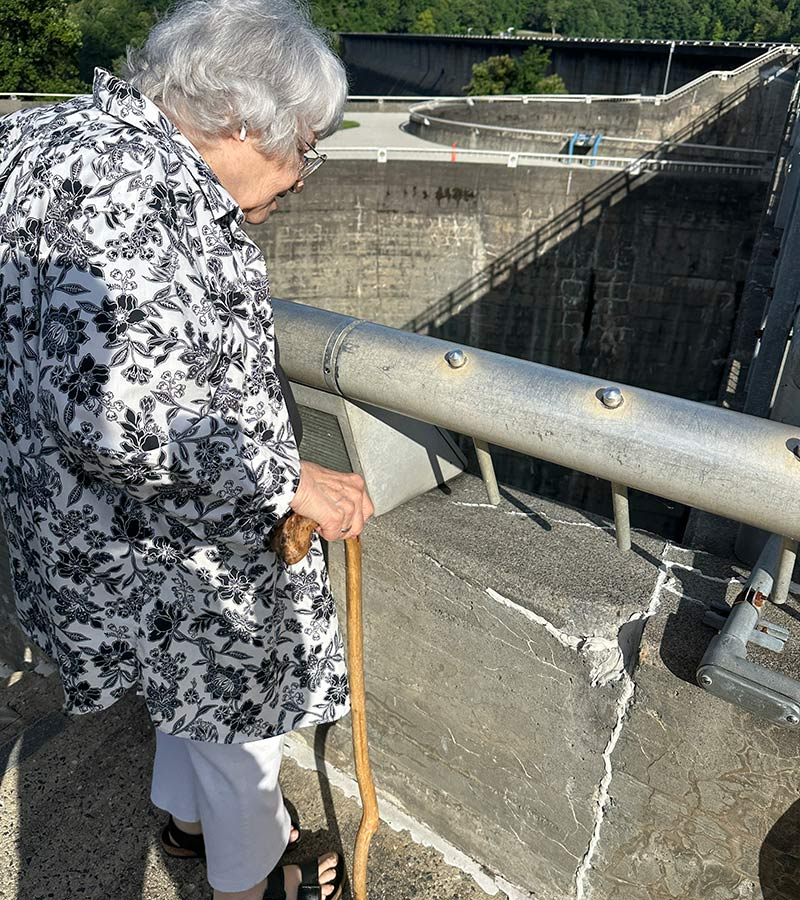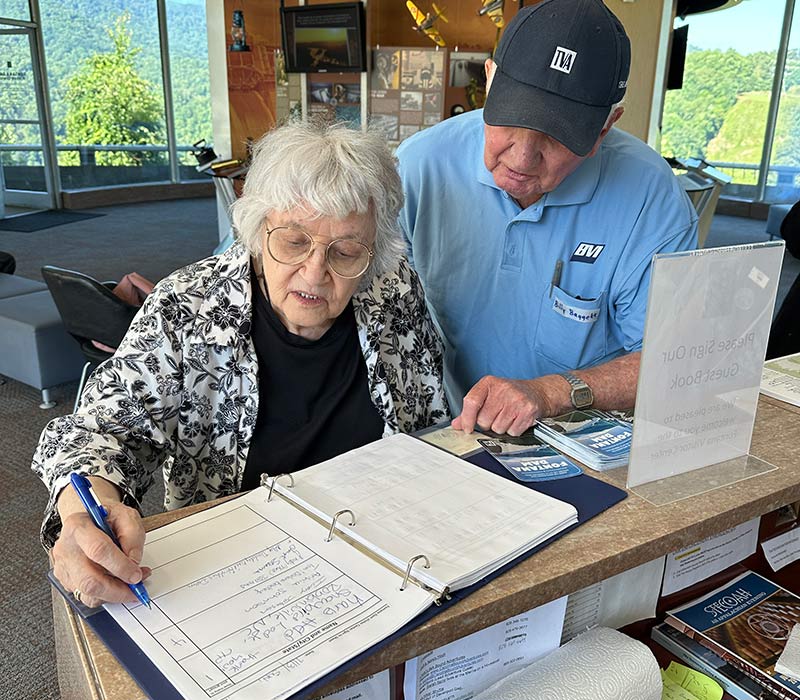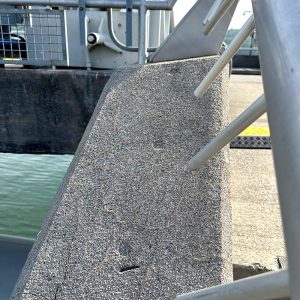For many families, stories passed down from generation to generation carry a weight that time can’t erode.
 For one woman, that story lived in the concrete of the Fontana Dam – pressed into the cement by her father’s hand more than 80 years ago.
For one woman, that story lived in the concrete of the Fontana Dam – pressed into the cement by her father’s hand more than 80 years ago.
In the early 1940s, her father was one of the many who helped build the Fontana Dam as part of TVA’s wartime efforts.
Amid the immense task of building one of the largest dams in the eastern United States, her father left a small, personal imprint – he pressed a nickel into the wet cement on the staircase near the parking lot. To this day, the coin impressions are visible to all who ascend those stairs.
Joseph Stearns died in 1948, just a few years after workers completed the dam.
His daughter, Judy Stearns, spent her childhood summers in Bryson City, North Carolina, and enjoyed many days at Fontana Village. She carried the memory of that story with her throughout her life, and she still recalls visits to the dam as a child, standing next to her father.
 Now 85, Judy returned to Fontana Dam recently with her family to see the coin impressions and walk down memory lane.
Now 85, Judy returned to Fontana Dam recently with her family to see the coin impressions and walk down memory lane.
“I wrote the story in the visitor log,” her son, Joseph Stearns II, recalled. “We were getting ready to leave and one of the Bicentennial Volunteers, Inc. staff came out and said, ‘Hey, I saw what you wrote. We’ve always wondered who put that coin there.’ I told him, ‘That was my grandfather.”
Guided back to the location, Judy and several members of her family carefully examined the cement – and there it was. Not just one impression, but three – each a lasting mark of a man whose contribution to the dam had become part of its very structure.
“This is the most beautiful place in the world,” Judy said, pointing to the coin impressions. “We’ve had four generations come through here – me, my sons, my grandson, and my great-grandson.
ce998e74-646d-4e9d-8b20-d58d476761c2.jpg?sfvrsn=facb3a73_1)
“All tied to this place. All tied to him.”
Her father’s story is a reminder of the many hands that helped build TVA.
Though his time at TVA was short, his legacy endures – in family stories, in old photographs and in the small, weathered coin impressions tucked into the wall one of the greatest engineering achievements in TVA’s seven-state service area.

